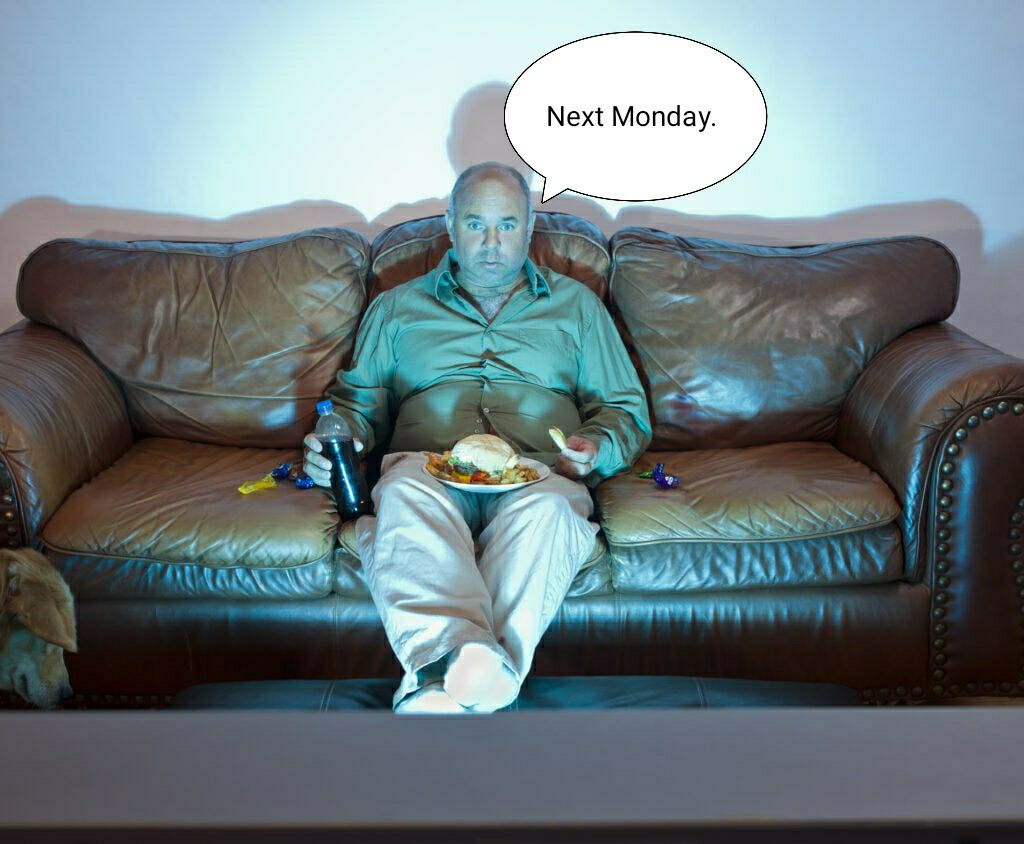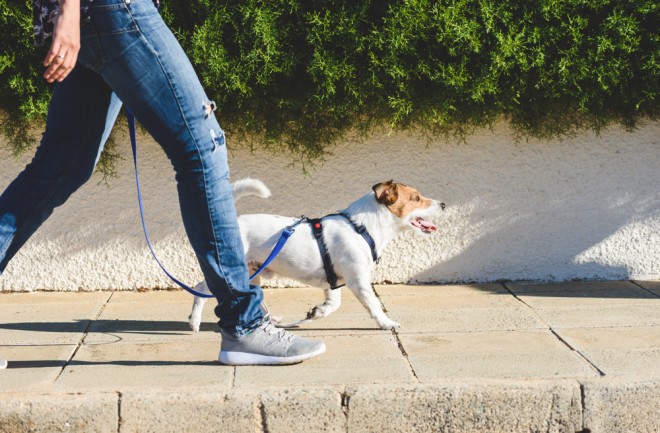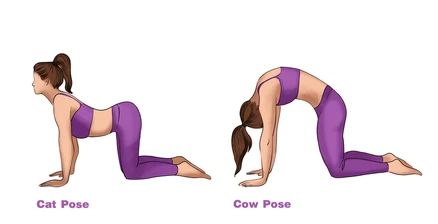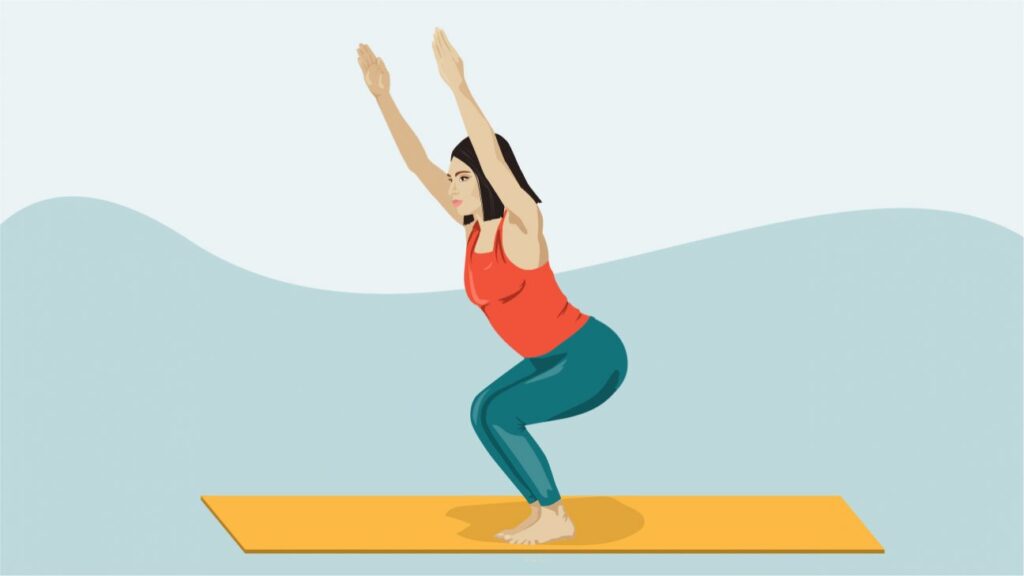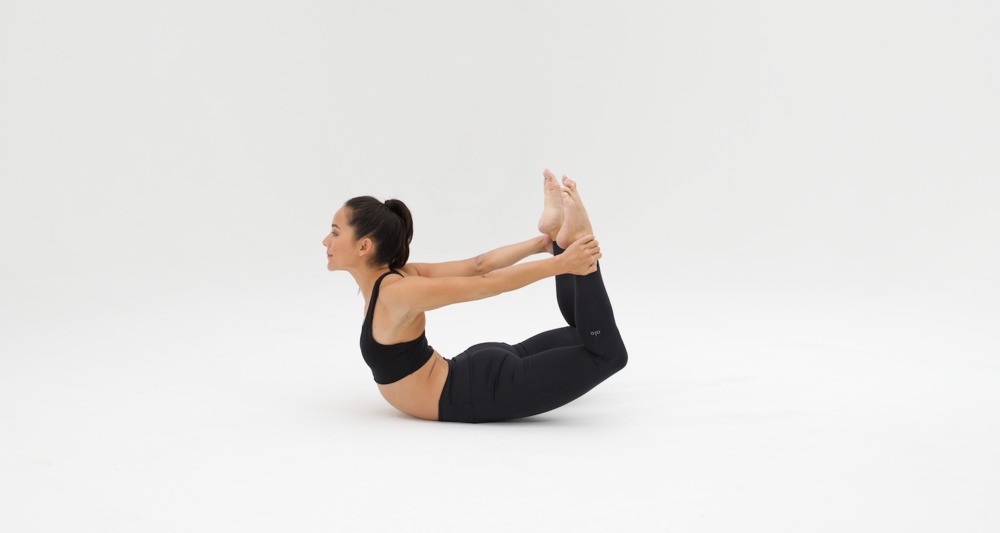Weight loss was never an easy thing to do. We first turn a blind eye to this problem and eventually have a snowball effect – more and more extra kilos get stored. The longer you wait, the more chances you have to enter the obese group and start looking for exercise for overweight beginners. There’s so much information that it’s easy to get lost. What are the best workouts for obese beginners, and how to choose them? How not to lose motivation on your way to success? Let’s clarify everything together.
Before jumping into the world of workouts, let’s define first what is obesity; how to understand that you are obese?
“Obesity” is a medical term that describes an exceeding fat percentage for a certain height. The formula is relatively easy to follow:
- For pounds and inches:
BMI = weight (lb) / [height (in)]2 x 703
- For kilograms:
BMI = weight (kg)/ [height (m)]2
A BMI of 30 or higher is the usual benchmark for obesity in adults. A BMI of 40 or higher is considered severe obesity.
The excessive fat issue itself is not a disease; it is typically accompanied by a series of health issues that just worsen because your body can’t perform its critical functions. All the organs have a heavy load made up of visceral fat, and your activity level; gets closer to none.
When people finally start seeing obesity as a problem, they need to consult a doctor and have all the medical tests done. Fighting obesity is not about shedding 5-20 kilos; it’s more complicated.
After you discuss all your health matters with the doctor, you can make the first small steps toward your goal – helping your body get rid of a constant companion-like fat.
According to recommendations, you’re on the safe side if you have 1-2 pounds a week or 0.3 pounds a day weight loss [1]. However, these numbers may vary significantly – in the first weeks, you will lose water weight; thus, the scales will show more satisfying numbers.
To burn some calories, you must introduce physical activity into your life and create obese workouts plans. Workouts for obese beginners are typically relatively moderate, at a slow speed; otherwise, it can become an unbearable load for your heart. It’s insensible to crave faster results. You need to be very cautious and aware of all the possible complications. When being obese, speed doesn’t matter; the most important thing is your persistence and strong will for change.
You mustn’t become self-critical. Stop blaming yourself for being obese, overeating, or not starting earlier. It will kill your motivation and even the slightest desire to do something, accept the truth and start acting.
Page Contents
What Is The Best Exercise For Weight Loss?
The laundry list of workouts targeting different body parts is immense. Social networks burst with videos for quick, practical, quick again, and super-efficient exercises: sweating sportsmen and sportswomen performing the sessions and showing how fit and muscular they are. When someone with obesity tries to repeat the same trick with barbells and at the same speed, they are unlikely to meet the goal, which is a straightforward way of discouragement.
It’s unreasonable to expect a person with obesity and a mainly sedentary lifestyle to perform highly-demanding exercises. Moreover, it can aggravate health problems.
When looking for effective workouts for overweight people, it’s essential to choose the ones that go easier on the joints, as long as they are always under significant pressure, even without exercise. The best variants are low-impact exercises, which are great at pumping your heart, but the joints are less influenced. The most popular and affordable activities are cycling, walking, dancing, yoga, and pilates.
At-Home Workouts For Beginners With No Equipment For Obese
Often times people who suffer from obesity are unwilling to go to the gym, fearing the disapproval of others. Although there’s nothing to be ashamed of, you may first start at home so as not to get into psychological tension. A homey atmosphere may have a positive influence, and you will feel comfortable while exercising. However, if you know that you can easily get distracted from your workout program by the video or film, it’s better to go to specific places for training – not to be tempted by other stuff.
One of the easiest types of effective cardio for overweight beginners is walking. It might not seem like a serious approach to losing weight because you just walk and there’s no real sense of exercising, but the list of benefits is impressive and gives you a good push toward your goal.
Walking
Walking is a pleasant way to spend time, refresh your mind and get a good start on a weight loss routine. Despite being so simple, a 2-mile walk is beneficial :
- Regular, brisk walking can improve your confidence and stamina. Remember the times when a walk to the nearest store seemed like a punishment? With regular walks, a tour around the city will no longer be a problem.
- Walking can decrease the risk of heart disease, diabetes, strokes, and high blood pressure; besides, it improves the work of your intestine.
- Walking, apart from physical benefits, benefits your mind. It helps to unwind after a tiring day and to improve cognitive skills and concentration.
Start walking sessions for 30-60 minutes a day, five days a week, with the correct walking posture, which will help you make physical activity a part of your daily routine.
The Center for Disease Control and Prevention issued a fact sheet on the “Relationship of Walking to Mortality Among U.S. Adults with Diabetes. [2]” It was discovered that people with diabetes who walked for 2 or more hours a week lowered their mortality rate from all causes by 39 percent. Walking lengthens the life of people with diabetes regardless of age, sex, race, body mass index, and length of time since diagnosis.
Walking Tips For Faster Results
Although Walking is a slow pace in terms of weight loss, it may be more efficient if you follow some advice:
-
Try It With A Friend Or A Family Member
If you are sociable, it will be a good idea to invite your friend or family to your daily walks. Apart from communication and talking about everything (which is quite liberating in psychological terms), you will become more disciplined; besides, it’s good to share your achievements with someone. By arranging your walking schedule with someone else, you’ll have fewer chances to skip the day, making yourself more organized.
If you don’t like walking without reason, set the goals – buying an apple or a bunch of tomatoes in the farthest shop.
-
Start With Locations You Enjoy
Check the maps for the places of interest in your city, and instead of just looking at the photos, take your own photos. It’s good to know better a place where you live without googling everything every time. After some period of time you may extend the geography of your walking trips – getting to the nearest town to see what’s there – jumping out of the box is a great way to extend your horizons along with losing weight.
-
Plan The Best Time Possible
Find the best time of the day to feel relaxed. It is better to be organized after work, not to be short on time. It’s also important to consider your body clock – some people enjoy early wake-ups, and some feel better in the evening. Anyway, seeing the sunset or the sunrise will motivate you to keep to your walking schedule.
If you have a remote job, plan a 30-minutes walk while having a break. It’ll reduce tension on the lower part of your spine and will energize for better work.
Dancing
Dancing is another fun-sport-health-weight loss combination and an effective exercise for obese beginners at home. You don’t even concentrate on weight loss or health benefits – just having fun while moving with the music. Dancing is also a type of cardiovascular exercise. It helps to develop muscle strength, stamina, and heart work. It’s a perfect match for those who need exercise for obese beginners at the beginning of the way.
It’s important not to be afraid to start. Nobody demands a perfect rhythm-with step. Just move your body as you feel it and have fun.
Weight Loss Tips for Obese Beginner Dancers
Although dancing is a low-impact workout, you may still experience sore knees and joints. So make sure your doctor approves of the type of physical activity.
-
Dance With A Friend, Spouse, Or Family Member
Having a company is always a double pleasure. Make sure to invite your closest ones for support. What can be better than losing weight and having particular quality time with your beloved ones&
-
Choose Your Favorite Music
Music is a good motivator; it gives you rhythm. Choose the one you like; it will not feel like a workout, just a friendly party. Besides, it can make a good time-tracker – make 30 minutes, 1-hour track-list and just dance until the music is on.
-
Dance Regularly
The best way to see results from dancing (as with any other type of workout) is to do it regularly. Try to dance at least 3-4 times per week. This will help you improve your fitness level and see results over time. If you can’t dance that often, try doing other workouts on the days you’re not dancing. This will help you stay active, create a calorie deficit every day and reach your goals.
Yoga
Yoga can enrich your obesity exercise at home as long as it is a beneficial workout and tool for building your strength, increasing flexibility and losing weight. This workout knows no limit in the sizes of people who just start practicing asanas. The positions of yoga vary from elementary ones to the most difficult ones. In the beginning, you will feel overwhelmed; however, this is a sign that you chose the right way. We chose the best exercises and poses which are the most suitable for overweight beginners, though initially, they might seem unreachable.
When performing yoga you don’t need any specific equipment – comfortable shorts and a t-shirt, and a fitness rug ot mat.
1. Cat-cow pose
Cat-Cow is a great asana to help you lose belly fat and reach weight loss goals. This set an excellent stretch for your spine and is good at strengthening your abs.
How to do:
- Starting position – your hands are shoulder-width apart and knees directly below hips.
- Inhale deeply while curving your lower back and bringing your head up; tilt your pelvis up like a “cow.”
- Exhale deeply and bring your abdomen in, arching your spine; bring your head and pelvis down like a “cat.” Repeat several times.
2. Table- top crunches
These crunches build your abs and help to burn belly fat.
How to do:
- Lie on your back with your legs up at a 90-degree angle.
- Bend your elbows to provide a light rest.
- Gradually lift your shoulders using the strength of your abs.
!!! Do not pull your head up with your arm strength.
3. Chair pose
Chair pose reminds squatting. It makes focus on your upper and lower body working, engaging quadriceps, gluteus, calves, and ankles.
How to do:
- Push your thighs together, bend your knees, and squat.
- You should be able to see your toes right in front of your knees when looking down.
4. Bow pose
Bow pose stretches the whole body and strengthens every muscle in your back area. It focuses on your chest, abdomen, quadriceps, ankles, groin, hip flexors, and throat.
How to do it:
- Starting position – lie flat on your stomach; your hands are on the sides.
- While exhaling, bend your knees towards your buttocks. Keep your knees hip distance apart.
- Stretch your hands backward and hold your ankles.
- Take a long and deep breath when drawing your thighs upwards. Your chest and head will also lift. Hold the position and keep breathing softly.
5. Forward bend pose
Forward Bend relaxes the brain and helps relieve stress. This pose stimulates the liver and kidneys; stretches the hamstrings, calves, and hips.
How to do:
- Stand with your feet together and slightly bend your knees.
- Fold your upper body forward toward your legs from your hips.
- Keep your gaze directed forward. Keep the pose as long as you can.
- Slowly get back to the original position.
Jogging
Jogging is a champion among the low – impact cardio exercises for obese beginners. It makes a good start for those who need to lose extra pounds, it works well for strengthening your muscles, and it’s a non-harmful and healthy passing phase toward having a morning or evening run.
Starting your everyday routine with jogging will help you lose weight, improve your heart health and immune system, reduce insulin resistance, help you cope with stress and depression, and maintain flexibility.
Besides, while jogging outside you may find new friends who also struggle with the same problem as you – it will be a good idea to support each other and share advice and results.
Weight Loss Workouts For Obese Beginners Requiring Equipment
Weight loss workout for obese beginners will help you reap the benefits of your liberating regimen.
Treadmill Workouts
A treadmill is generally used for walking, running, or climbing while staying in the same place. This is an ideal instrument for those who have no possibility to go outside due to different reasons – you perform the exercise while standing in the middle of your room.
The treadmill is relatively easy equipment to use, providing an excellent cardio workout. It offers a less harmful practice because of a predictable surface, thus, reducing the risk of injuries.
Running on a treadmill burns calories faster than most other forms of in-home exercise, such as riding a stationary bike.
Jump Rope Workouts
Jump rope workouts are among the best workouts for obese beginners at home and are a great type of physical activity to be included in your list. The only equipment required is a rope. A jump rope workout is highly effective for burning calories. Being overweight will help you burn more calories because, essentially, you lift your weight to jump. Jumping rope produces the same results as Jumping rope packs the same intensity as an 8 minutes mile run or a 20-mile-per-hour bike ride [3]). Jumping rope also helps you improve your endurance and athleticism, agility, coordination, strength, foot speed, and much more.
As you’re practicing the basic jump, keep in mind some essential guidelines:
- Keep your feet close together when jumping
- Jump on the midsoles of your feet and land softly
- Keep your jumping height low (½” – 1″ off the ground), high enough to let the rope pass-through
- Keep your knees slightly bent at all times
- Maintain neutral spine
- Keep your head up, chest up, and head looking forward
- Keep your shoulders pulled back and your elbows held down and back
- Use your wrists to turn the rope (not your elbows or shoulders)
- Avoid jumping on hard surfaces like concrete.
Don’t overdo rope jumping exercises. Start slow and gradually increase speed, intensity, and stamina.
Stationary Bike
A stationary bike provides cardio exercise to burn calories, improve your muscular tissue and train your heart. A well-trained heart has a lower heart rate at rest and during exercise.
A stationary bike is a substitution for those who can’t go cycling outdoors. However, having a ride outside is always a better option: you need to control your motion and adjust to different surfaces, and open-air conditions for exercising will provide your lungs with good ventilation.
Balanced Diet
It’s impossible to skip the 50% of your weight loss success connected to your diet. Starting stretching exercises for overweight beginners is an excellent push toward your goal; however, nothing will change if you don’t change your diet. Well, maybe 1-3 kilos will go away (mainly water excesses), but in terms of obesity, it will not make much difference.
- Be moderate while eating. When you feel you’re 70-85% full, stop. It will be enough to cover your physical needs. Everything eaten more than this is just your psychological desire to feel the taste.
- Don’t eliminate food from your regimen; otherwise, you’ll slow down your metabolism, and your carefully-preserved weight will hold on to you even tighter.
- Considering the low speed of your workouts, you won’t make a significant calorie deficit during the initial period. So, don’t think a 60-minute walk or dance session will cover a burger, ice cream, and hot chocolate altogether.
- Give preference to vegetable snacks instead of greasy crisps or fattening sugary bars; avoid simple carbs, and go for complex, as they offer more benefits for health and muscles.
- Plan your daily menu and count the calories. Weight loss requires your control and dedication.
The Bottom Line
Being obese isn’t easy. Your lifestyle is limited, and you can’t experience life in all aspects. When you decide to change your life, be sure to consider the following factors:
- Fitness goals shouldn’t be too high. Obese beginners are unlikely to reach them and, thus, lose their motivation at the very beginning.
- Move one step at a time – plan one type of low-impact activity and add another kind of physical activity when you feel settled. By switching different exercises, you will target other muscle groups.
- Plan your menu in details and focus on a healthy menu – slowly cut down on simple carbs, unhealthy fats, and snacks. Don’t make dramatic changes at the beginning, as it may lead to failure.
- Make a workout plan considering your body clock and working schedule.
- 30 minutes walk every day will make a perfect introduction of physical activities into your life.
- Make your exercise routine fun – add your favorite music, and ask your friend to join and support you.
There are lots of instruments to help you lose weight. However, the most important is your first initial step. After you read the article, pluck up your courage and start exercising – go for a walk and buy new shoes for jogging – this is the best thing you can do – act instead of only considering to act.


